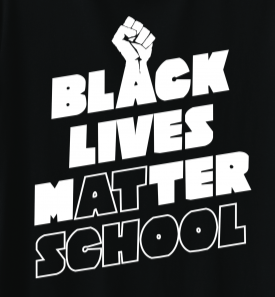
The second part of the SUNY New Paltz School of Education’s first annual guest speaker series, “The Inner Struggle of Educators of Color in Predominantly White Spaces” was a virtual panel held on Monday, Feb. 27 facilitated by the Black Lives Matter at School Collective at SUNY New Paltz, hosted by Anthony Dandridge. The event featured the voices of six different women of color involved with education. Dr. Paula C. Perez, a retired administrator, adjunct lecturer and published author, guided the discussion while also participating.
The Black Lives Matter at School Collective is driven by the purpose to “provoke critical reflection, discussion and action regarding issues of racism on both our campus and society at large.” Public higher education institutions have a duty to create opportunities for those within the community to learn, explore and address systematic racism on both the local and more public level. The Collective at New Paltz carried out this message through workshops, panels, protests and other forms of social activism. “The Inner Struggle of Educators of Color in Predominantly White Spaces” is a clear example of the collective’s efforts materializing into a campus event.
The panel was driven by conversation between the six women, with anecdotes and lessons learned woven into questions and answers throughout the 90 minute event. Dr. Perez guided the discussion with various questions, all relating back to the general idea of what it means to work as an educator of color, its implications, struggles and opportunities. Her leading question to the panel was “as educators of color, what have been the struggles that you have dealt with in your various spaces?”
Noelia Santiago, who has been teaching English at the adolescent level for 18 years now and currently works in Ellenville, NY, offered key insights to how she grapples with her role and fears. Santiago explained how she often worries if she is making enough of an impact on both large-scale and small-scale stages. Being a racial minority in her workplace, there are many different instances that have taxed her and shaped her; she described the experiences as “day-to-day reminders that maybe everyone doesn’t think you belong here.”
This feeling was not unique to Santiago, with many of the panelists nodding their heads and adding on to her comments. Dr. Perez was able to draw back to the event itself by identifying Santiago’s struggle as one of the many reasons that consciously working Black Lives Matter lessons and practices into schools is not only beneficial — it is critical.
Conversation then segued into the second question prompted by Dr. Perez; “from your lens, why is that so important?” Pre-service teacher Maya Leslie responded profoundly, explaining how as a student, being able to connect with what she learns in class in both a materially-educational way and drawing upon it outside of class is something she values greatly. Leslie was the only student featured on the panel as an education major at New Paltz. She explained how she never had a teacher of color until she attended New Paltz and took a Black Studies course, which helped her realize how important and inspiring it is for students of color to have role models who they can personally relate to.
The inner struggle felt by educators of color was thus identified. We are living through a time where the workforce is seeing fewer and fewer educators of color. However, both individual dedication as well as organizational action has been working to solve this issue. Dr. Perez cited the work of Educators of Color Network (EOCN) to reiterate the importance of recognizing the problem and drawing upon community collaboration to produce change.
Founded by Perez, the EOCN is a collaborative network of current and retired educators who describe themselves by saying “This community is open to all black educators and other educators of color, including teachers, administrators, higher-ed educators and pre-service teachers.” Diversity is a critical need for an effective educational environment, and the EOCN works to establish and maintain that goal at all levels of education.
The concluding point of the panel was simple yet profound: “Representation matters.” Because the conversation about racial diversity in the education workplace is nowhere close to being over. There will always be a need for listening to others, being aware of racial disparities and placing extreme value in educators, one of the most valuable roles when working toward a productive, anti-racist society.
